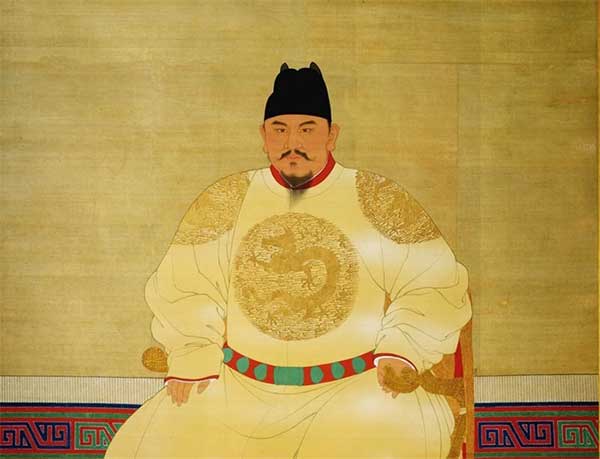 |
|
Zhu Yuanzhang, the founding emperor of the Ming Dynasty; the portrait of Kim Yuk shows the senior Korean official standing under a giant pine tree.[Photo provided to China Daily]
|
More telling of the literary diplomacy are the ingeniously designed portable ink-and-brush holders. When inspiration hit, a poet could wait no more. Inspiration had presumably hit many times when a Chinese (or Korean) official was touring in foreign parts accompanied by his Korean (or Chinese) counterpart.
Given that most leading painters during the Ming era were literarily accomplished, it was only natural that the literary influences already mentioned seeped into the more broader area of aesthetics. (In 13th-century China and later, paintings by men of words were much celebrated and dubbed literati painting.)
Regrettably, few examples are on view in the exhibition, apart from portraits, one of which showed Kim Yuk, a Korean emissary, standing under a giant pine tree. It was done in 1659 by a Chinese painter named Hu Bing.
"Plein-air portraiture, which started to gain popularity during the Ming era, was also adopted by Korean artists of the time," Ni says. "The casual style of dress, complete with a jade pin to hold the flowing garment together, exudes a sense of leisure and calmness often associated with literati painting."

